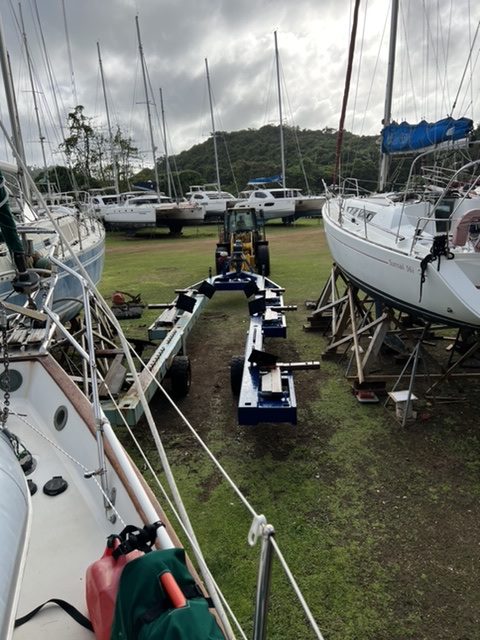
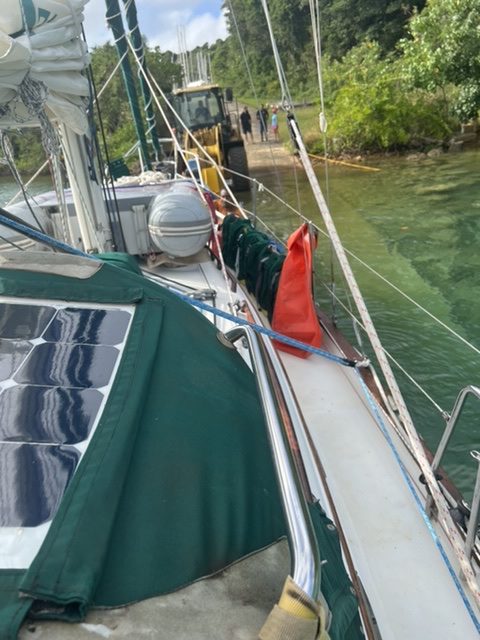
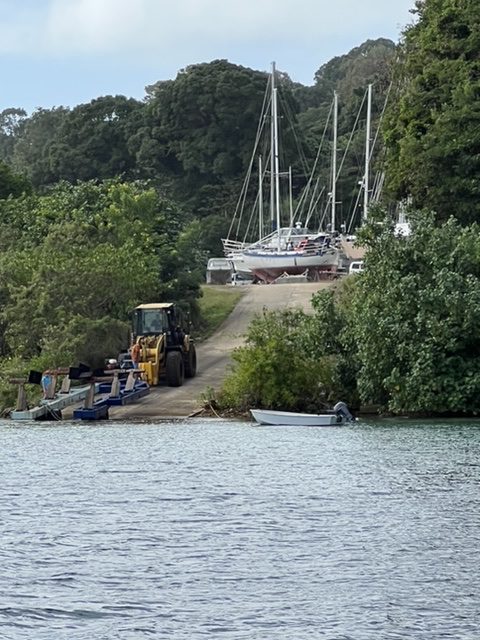
Exactly four weeks after we arrived in Vava’u, Tonga, we finally “splashed” Cool Change – out of the boatyard and into the water. These last four weeks represented no doubt the most detailed, strenuous and even frightening recommissioning we have ever done since our 2014 departure from San Francisco.
We expected no less, after 30 months of separation from our dear Cool Change, but we were lulled into believing we had escaped any issues of import because at first, the recommissioning went so well. Soap, water, vinegar and WD-40 seemed to cure almost any ill. The engine was very gingerly coaxed into purring once again. The chart plotter displayed a detailed nautical chart and the RADAR showed the vicinity. The water maker ran clear and had good pressure, and the cold plate in the refrigerator worked. Recommissioning the running rigging went well, but with an extra element of caution and care as we tried to recall, with the help of photos from previous efforts, how to put everything back together.
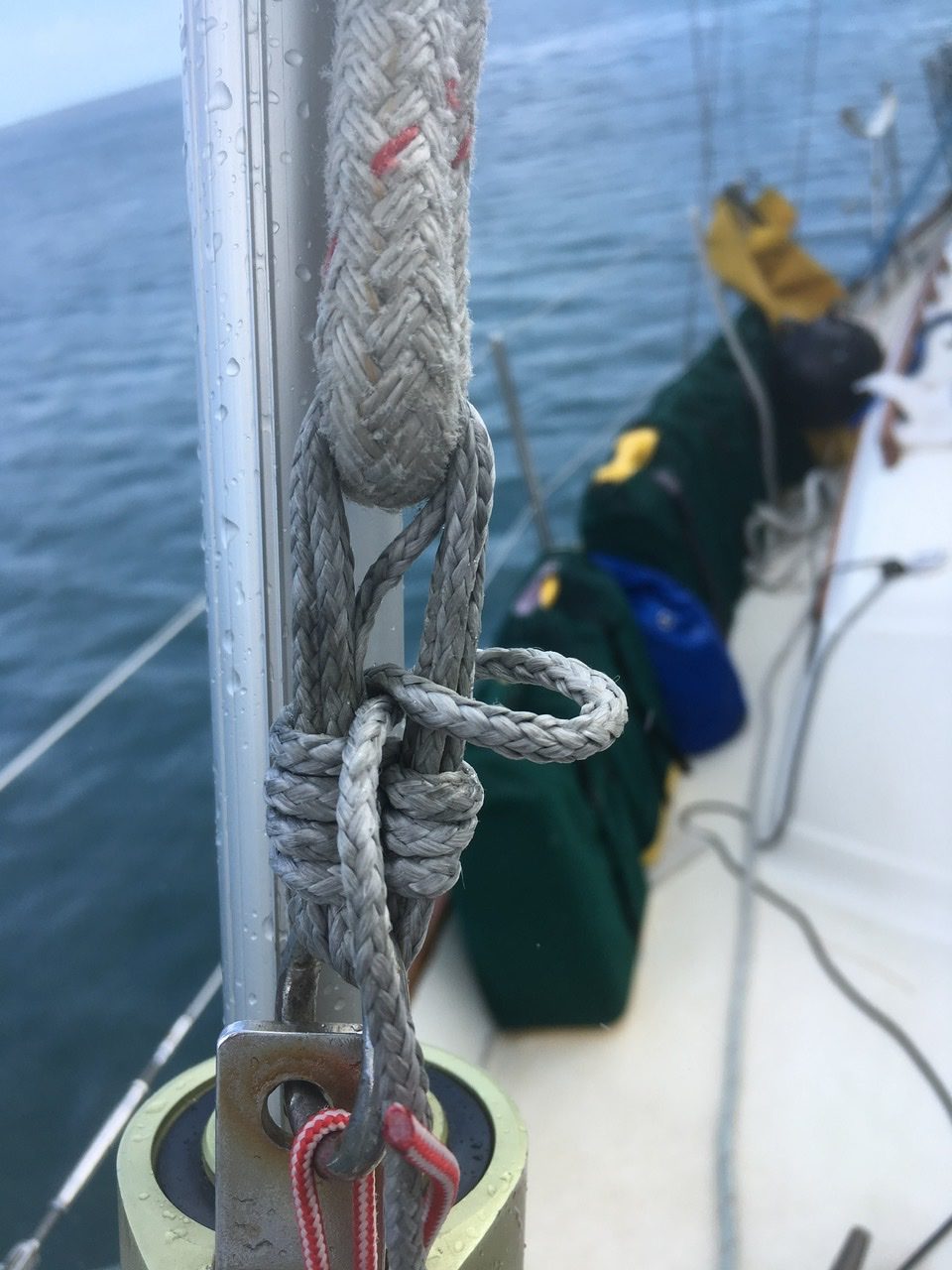
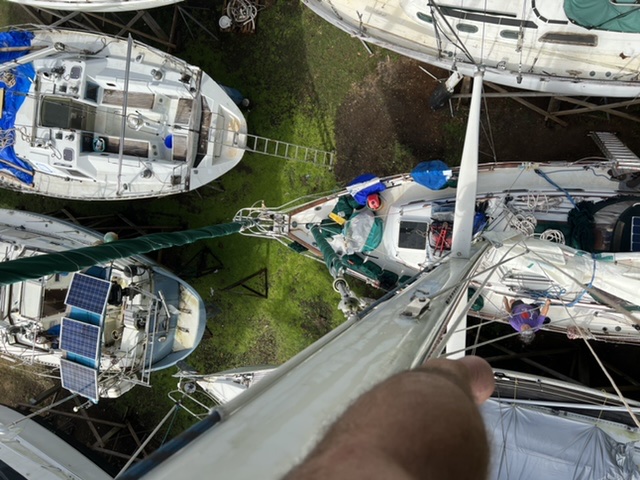
But just as we thought we had passed through the process unscathed, we peeled back another layer of the onion to find one issue after another that needed resolution. For example, all of the knobs on the stove were frozen. A moment of panic set in as we imagined life aboard without being able to cook. Fortunately, those did resolve themselves with vinegar and gentle nudging.
Not surprisingly, none of the three batteries (two house and one starter) would hold a charge. Fortunately, we had ordered replacements for the two house batteries that were waiting for us when we arrived. With the help of some very strong guys from the Boatyard (the batteries are each 160 pound, 225 amp hour AGM’s), and some very cleverly engineered installation ramps by Rick, we got them installed. We are awaiting a late-August arrival of a new starter battery.
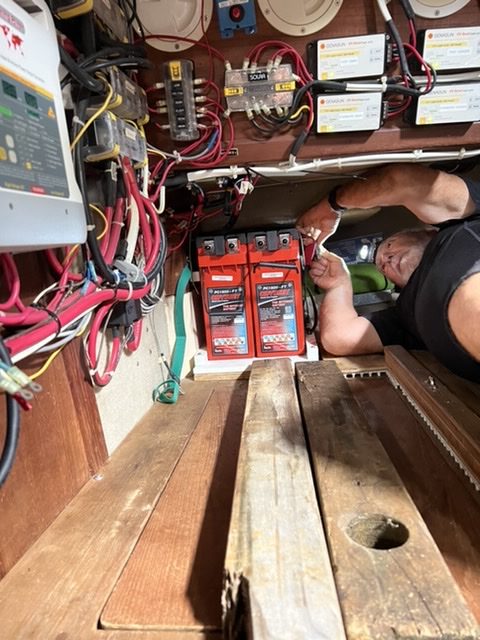

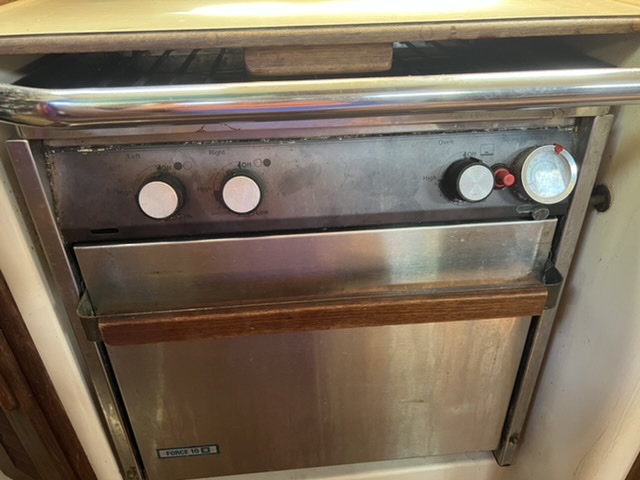
The bilge pump wasn’t working and and bilge counter was acting funny. First, Rick discovered that the electrical connections for both were corroded. So he cleaned them up and added a spring from a writing pen to replace a spring in a connection that had disappeared. The big surprise was when we discovered that the bilge pump had actually cracked apart. Fortunately, we had a back up bilge pump that Rick installed, and now, all is working fine.
Something we wouldn’t have thought twice about had our layover been just 3 months instead of 30, were the thru-hulls. These are basically holes in the boat that close with a ball valve operated by a metal handle. Obviously you don’t want any holes in the boat that you can’t control! Normally we would have just exercised the handles a little to make sure they would still open and close and that would be the end of it. But as Rick was doing so for two of the thru-hulls, the handles broke! They were rusted to the point that they broke under pressure where they were connected to the thru-hull. Here we are in Tonga where boat supplies are almost nonexistent. So we found some normal plumbing ball valves in the local hardware store with handles similar to our thru-hull handles, and with the help of the Vava’u Boatyard and our handy Dremmel tool (a gift from my recently deceased friend Chris), we were able to modify them to fit. Phew! We also had to check with a flashlight from outside the boat to make sure each thru-hull was opening and closing properly. What an ordeal. Everything seemed to be taking so much longer than we remembered from earlier recommissionings.
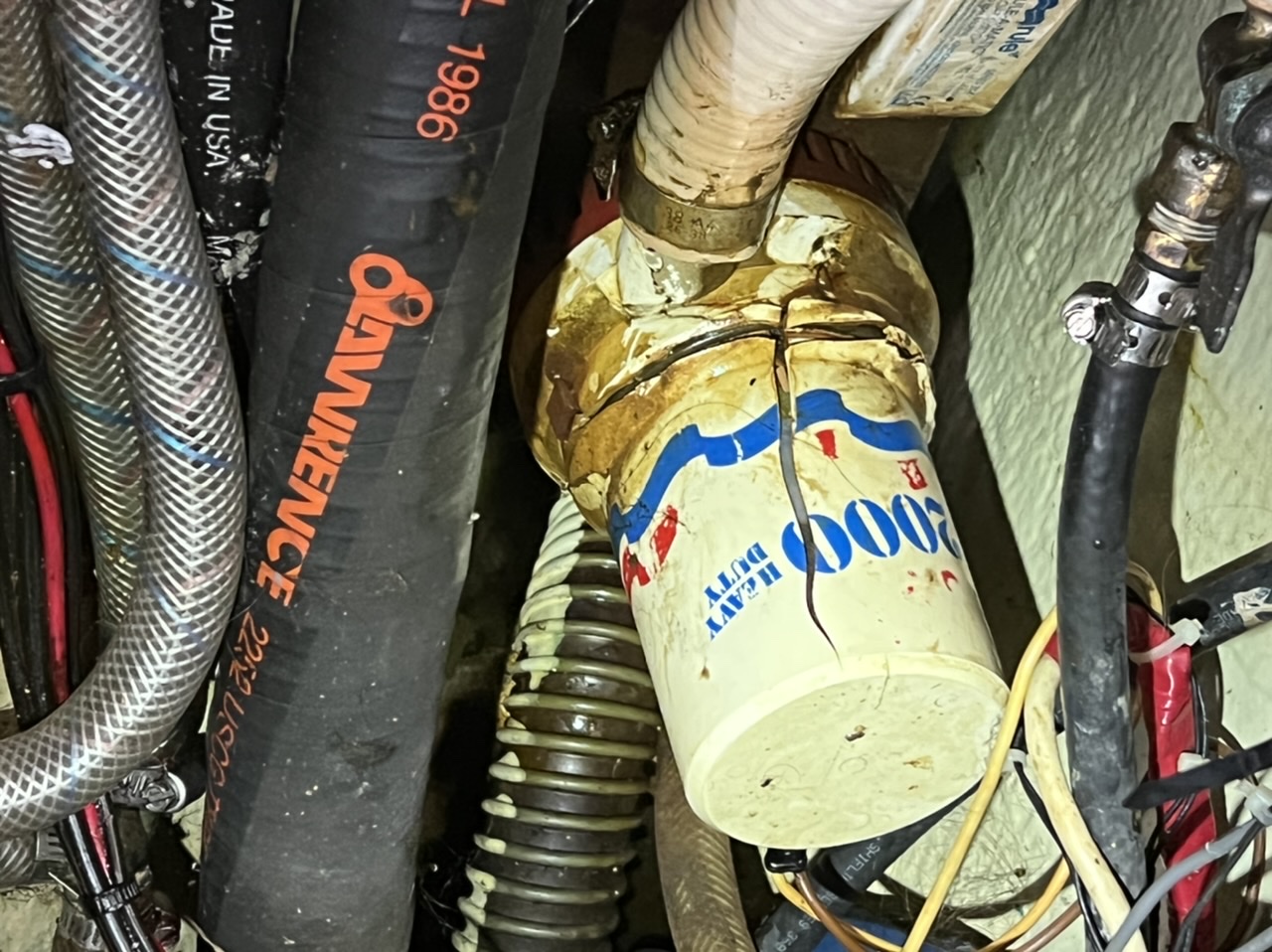
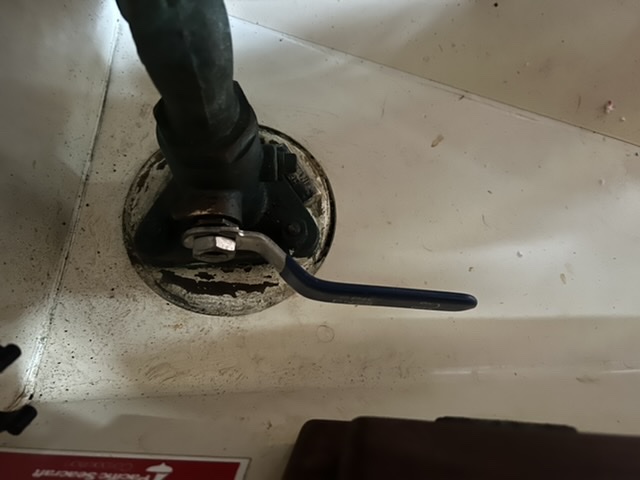
And then there was the ordeal of the chart plotter. After removing one of the two micro-SD cards in the chart plotter to update it online and then return it to the chart plotter, all of a sudden, the detailed navigation chart on the other micro-SD card disappeared. If there is one leg of our entire voyage from San Francisco that requires a detailed navigation chart, it is the one from Tonga to Fiji, which is reported to be one of the most dangerous crossings in the world due to the number and proximity of reefs scattered all along the passage. We absolutely needed that detailed chart, showing our location and the location of all the reefs, including the ones we added ourselves based on cruiser reports. We have backup systems, of course, but none would be as reliable or easy to use as the chart plotter.
It was hard for me to believe that the chart company would cut off my access to the chart just because I hadn’t paid for the annual update, but I was desperate to find the solution so I paid for the update. As the card was updating online, the Starlink internet connection dropped and the update stalled. (Ever since the volcanic eruption here destroyed the undersea internet cable, Starlink has been the only internet available for all business and private use needs, the only link to anyone too far away for cellular – but there aren’t yet enough satellites so the connection drops for a few minutes on a consistent basis. In addition, the public access Starlink networks are located at specific access points in town, where you hope you can get a parking spot close enough to be within range.). When I came back the next day to restart the download of the update, it wouldn’t start. Tech Support online chat and phone contact closed at 9:30 a.m. my time (they are one day earlier and 7 hours later than we are here in Tonga), so I had to wait until the next day and get up early to drive to the Starlink location to talk with them. Well, when I called, they said the lines were all busy, so I had to come back the next day. I was able to send an email, though, and the respondent told me to “Remove the folder Navionic making a copy on the desktop. Then start the download again.” In retrospect, I don’t know how I could have missed what she really meant, but I interpreted that statement to mean that I should remove a folder called Navionic that was being made onto my desktop. I searched my entire computer and there was no folder called ‘Navionic.’ She said if that didn’t work, I should download an app that would allow her to control my computer, but the link for the download didn’t work. She sent me a new link, so the next morning I drove out in the early morning darkness to to the Starlink site to try again. The link now worked, but then it wasn’t clear how I was supposed to get her online to work with me.
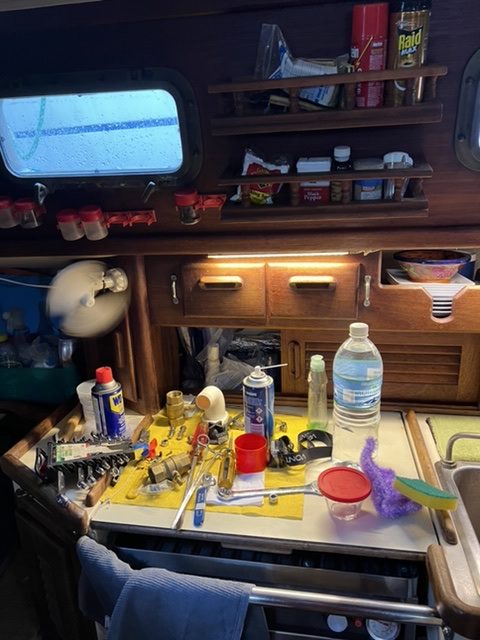
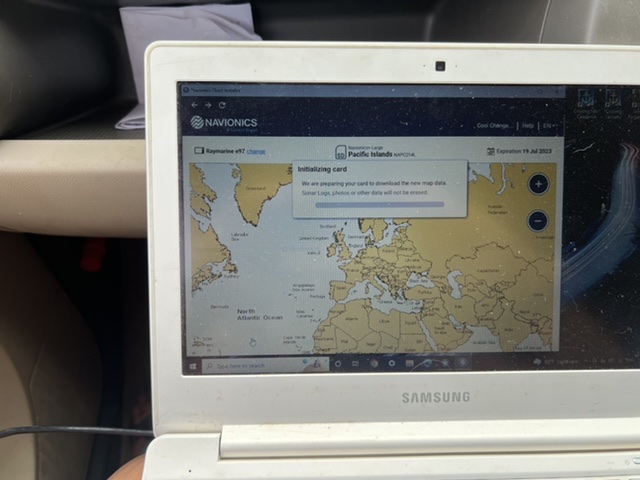
So I contacted Chat again. I was able to get through, and the new support person told me to “remove the Navionic folder FROM THE SD CARD and try again.” Duh. Simple solution, bad English instructions the first time. (It turned out that the first person who responded was in Italy and her first langauge was not English). That worked and I was able to update the card. Meanwhile, since I had the support person on chat, I asked her a few more questions, one of which was whether the card would stop working if it hadn’t been updated. She said no, it would not stop working. That worried me, because that meant there could possibly have been another reason why the chart was not showing up on my chart plotter.
The story doesn’t end there, though. The day I finally got the card updated was Rick’s birthday, so I left him at our bungalow to lounge in while I updated the card. I had to see if it would now work in the chart plotter so I drove to the Boatyard. I inserted it, waited what seemed like forever for the charplotter to fire up, and … still no chart. Shit. So I removed the card and inserted it again, and voila! Chart! All along it may have just been a bad connection between the card and the chart plotter, and all I needed to do was remove it and put it in again. I just hope the connection remains throughout our passages. (Rick thinks it will – once the connection is made, it will stay, he says.)
A problem we knew we had to face even before we returned to Tonga was that the macerator had stopped working, probably years ago. The macerator grinds up the contents of the black water tank as it is discharged from the tank. We hadn’t been using the tank since we came to the South Pacific because we were always at anchor in open water, not in a marina. But in Fiji we were likely to be in a marina again, and if we sold the boat, we wanted the macerator to be working, so that was a job that Rick had slated for completion this time around. He was also concerned that maybe the cause of the macerator failure was a clogged black water tank, so he wanted to replace the lid of the tank and install an inspection port to be able to clean the tank.
Well, it turned out that the lid couldn’t be replaced because a permanent shelf had been built above it, but a Boatyard employee named Cyro was able to get the lid up enough to reseal it, and he also installed an inspection port. The tank was not clogged. But the old macerator had to be unscrewed from a large plastic fitting to which it had been attached for 33 years, and it was frozen. The fear was that if that fitting broke, it was likely manufactured with US threads and couldn’t be replaced here. With much patience and lubricant, Rick got the fitting unscrewed. He could finally have a full night’s sleep again, his deep concern about it keeping him up at night before he got it loose. The new macerator is now installed, along with a new Y-valve and all clean toilet system hoses, and the toilet has been serviced and reinstalled too.
Other issues we faced included that the ignition for the engine was frozen. Rick managed to get it working again with silicone lubricant and a lot of patience. The dinghy motor started up but it wouldn’t idle, so the local mechanic did a tuneup on it and it runs well now. Rick’s handheld VHF radio no longer works – he figures the factory-installed battery just expired. That is a small problem because mine still works, but it only concerns me in that we had used our handhelds to communicate at night when he went forward to the bow. We bought some walkie-talkies at the Yacht Shop here in town and that should solve that problem. Also, one of the navigation lights on the bow stopped working – Rick built up the connection on the bulb with extra solder and that seemed to fix the problem.
We were fortunate to have been given a cruiser/COVID-era discount on a cute little bungalow (called a “fale” in Tongan) for the first two weeks of recommissioning, which we agreed to extend to a third week once we realized that the head project (toilet, black water tank and macerator) would be done during the third week. So it was only the fourth and last week before splashing that we spent on the boat. Living on a boat “on the hard” (on ground) is not the most pleasant experience: for example, you have to climb up and down a steep ladder every time you get on or off the boat, which you have to do every time you need to use the boatyard bathroom unless you pee in a bucket, because the discharge otherwise goes directly to the ground. The boatyard shower is warm only if by chance or if you know about how to turn on the heater if turned off, which we didn’t discover until the day before we launched. Cool Change was parked right up against the backdrop of a dense brush growing up the side of a steep cliff, which is great for cyclone protection but not so great for avoiding mosquitos day and night. The cold plate that turns our icebox into a refrigerator is cooled by coils in a thru-hull when they have contact with the ocean water, so we can’t use our cold plate for fear of it overheating while on the hard. So we had to load it with ice every other day and use it as a true ”ice box.”
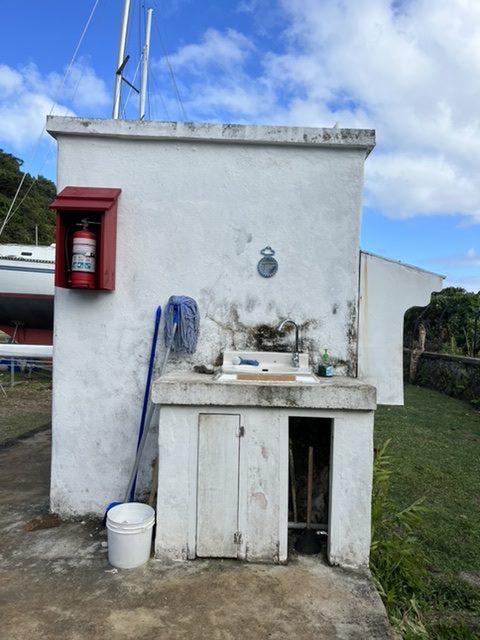

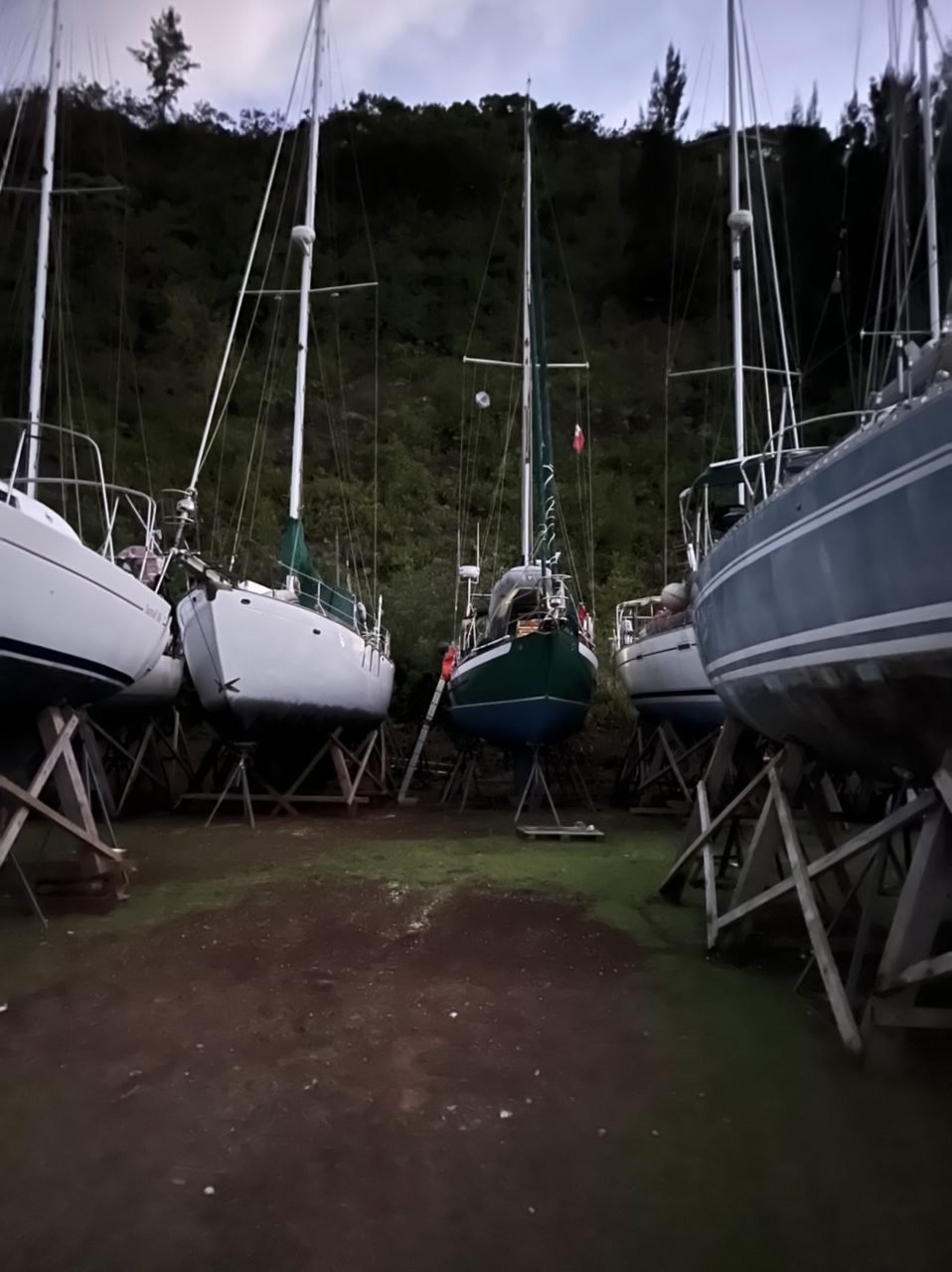
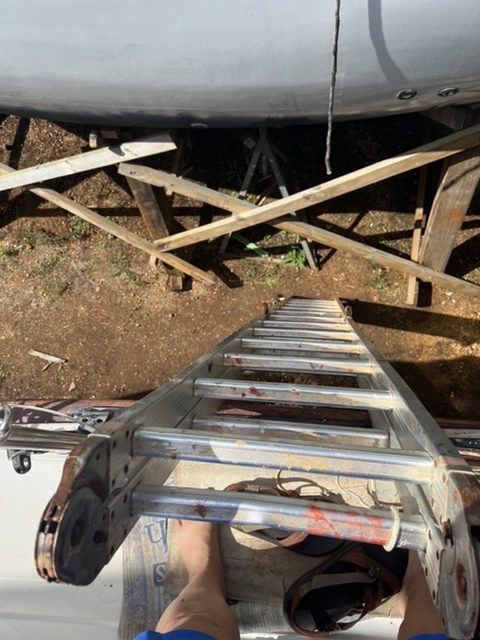
So now to the frightening part. Here we were, newly moved onto Cool Change and just having faced one maintenance issue after another, exhausted by the physical and mental toll all these challenges had taken on us and trying to nevertheless get just one good night’s sleep, when … EARTHQUAKE! Yes, a 5.6 earthquake centered only about 35 kilometers out in the ocean from us, shook our boat with us asleep on it to a degree of violence that neither Rick nor I had ever experienced before in our lifetimes, in spite of having spent most of our lives in earthquake-prone California. It was really terrifying. We can’t believe with all the shaking that the hull wasn’t damaged nor that Cool Change didn’t fall off of her supports, likely bringing us to an untimely, unlikely and unfathomable death. Just meters from the ocean where we would have been safe from an earthquake, we could have died on a boat on land! The danger was multiplied by the fact that the heavily-reinforced “cyclone cradle” that held Cool Change stable above ground had been replaced with lightweight maintenance supports so that her hull could be painted just before splashing. As a result, we were balancing on a minimal foundation. Tonga is located within the “Ring of Fire,” known as one of the most volatile seismic areas on earth. I was in a deep sleep when it started, and thought I was having a horrible nightmare until Rick woke me up, while Rick was awake for all of it and almost in shock from the experience. We were both paralyzed in fear and disbelief until it stopped. It made me ever more anxious to get ourselves off land and into the water!

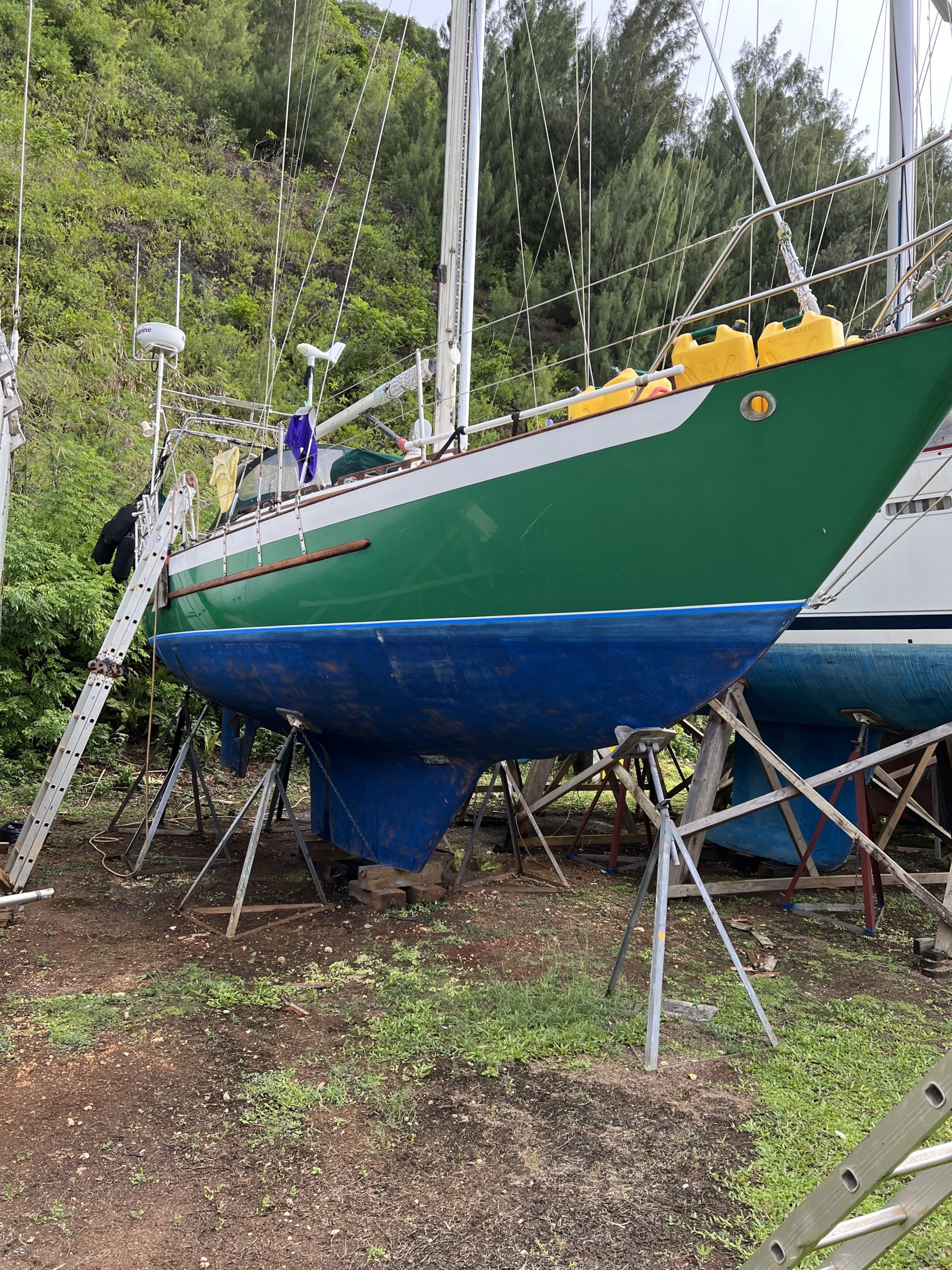
But finally after all that work, we were ready to splash. We took some pictures of Cool Change when she was all cleaned up and ready to go:
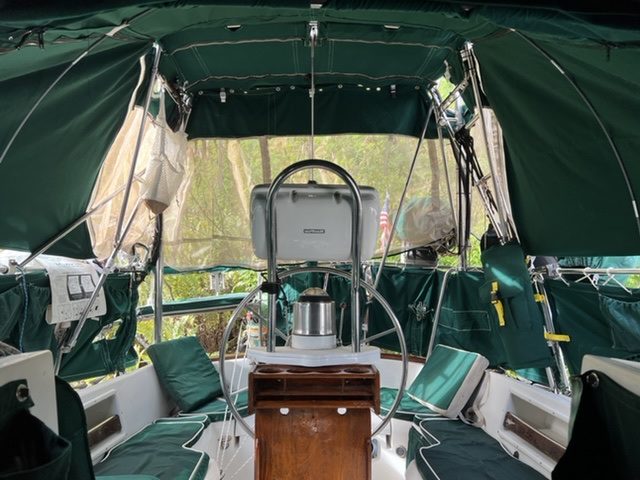
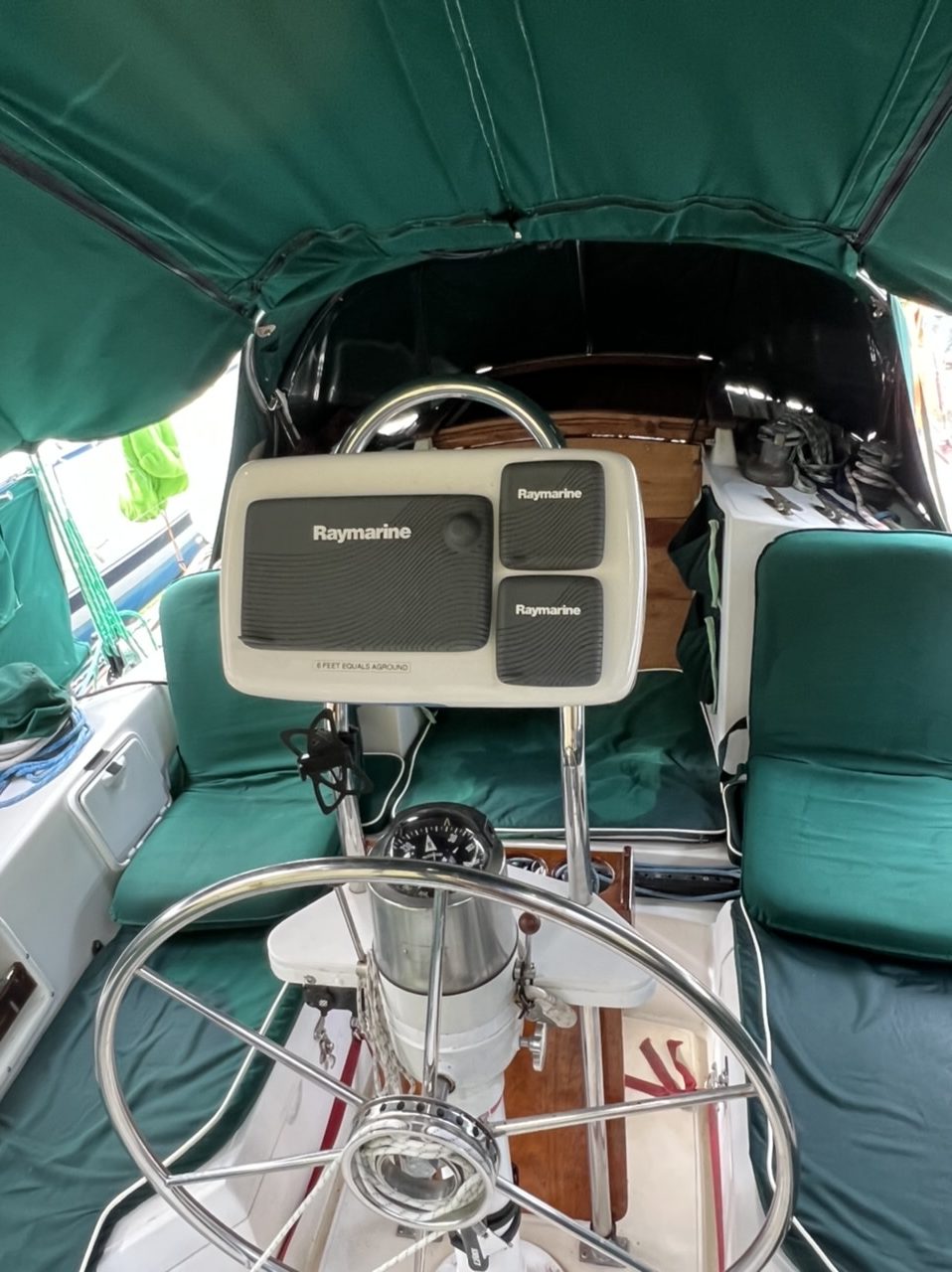
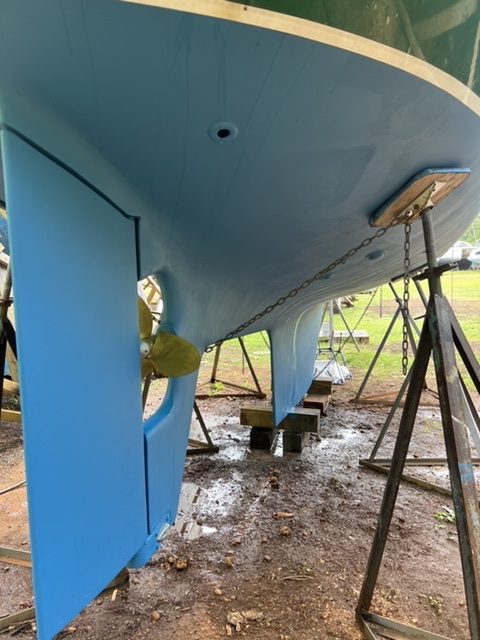
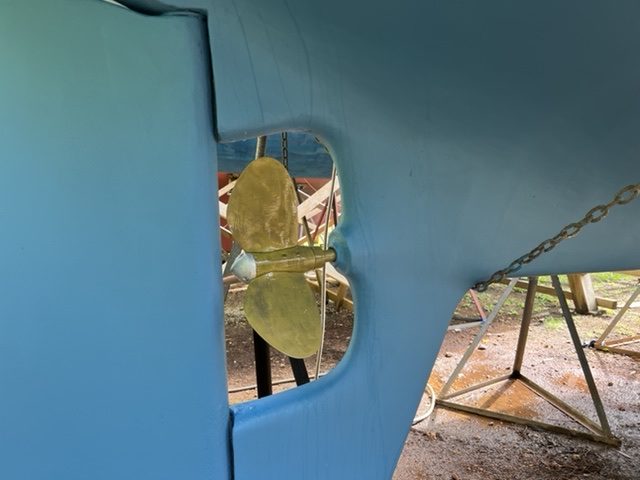

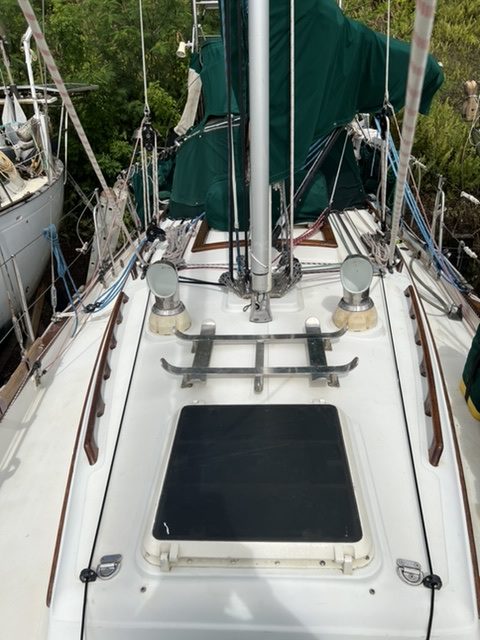
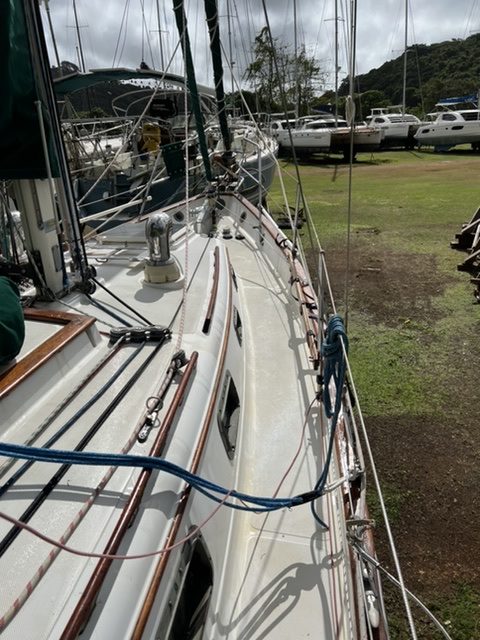
This move onto the water is opening up a whole new chapter for us, but before I go there, I feel the need to acknowledge the people who have helped us get here. First, there was Lisa at the Tongan Consulate in San Francisco. Had it not been for her, our trip would not have happened when it did. She smoothed the way through an obstacle course to get us to Tonga. Only now has the Tongan Government finally agreed to open its doors to visitors, and we got a big head start ahead of all of the boat owners who have been locked out for so long. Then there was the friendly guy at our release from quarantine who took us under his wing, got us out of the quarantine hotel and drove us to the hotel of our choosing, just because he recognized we would have trouble getting a taxi on our own in the chaos of the end of quarantine.
Then there was Tim, who rented us a cute little car with great gas mileage (good thing because gas here is $8 US per gallon) and who put us in touch with Julie of Vava’u Vacation Rentals. Julie rented us a cute little bungalow (that had been unused since COVID hit) for about 30% of its usual rate, calling it a “cruiser discount,” and also introduced us to many of the local business owners. As always, and throughout the years, Greg Just of the Tropicana Cafe has been an unrelenting source of information and help, online and in person, and Rick has become addicted to his employee Mary’s whole wheat bread. And finally, there are Al, Dora and Cyro at the Vava’u Boatyard, who have been incredibly responsive and attendant to our every need, from grinding down a metal thru-hull handle for us to finding a home for our house-cleaning give-aways. Last but not least, thanks to all of our family for understanding and supporting our need to get back to our boat.
Anyway, back to Cool Change. “Splashing” was a huge event for us, and it feels like we are finally doing what we started this adventure to do: being on the water with a warm sea breeze gently caressing our faces and watching a sliver of a moon float through the sky, all problems in our lives feeling like a distant memory. This, in spite of the fact that within a half hour of splashing, our engine died due to an interruption in the fuel intake – cause still uncertain. It forced us to deploy the sails in an emergency situation (trial by fire!)! that was exhilarating. Then we decided we had better get a tow if we were going to make it into the harbor before nightfall (the wind direction was not cooperating). But no worries. The huge powerboat from the boatyard that had splashed just moments before us, came out and rescued us and towed us in, and then some people we had met years before in French Polynesia from one of the only other boats in the anchorage, invited us over for beers. Life is good.
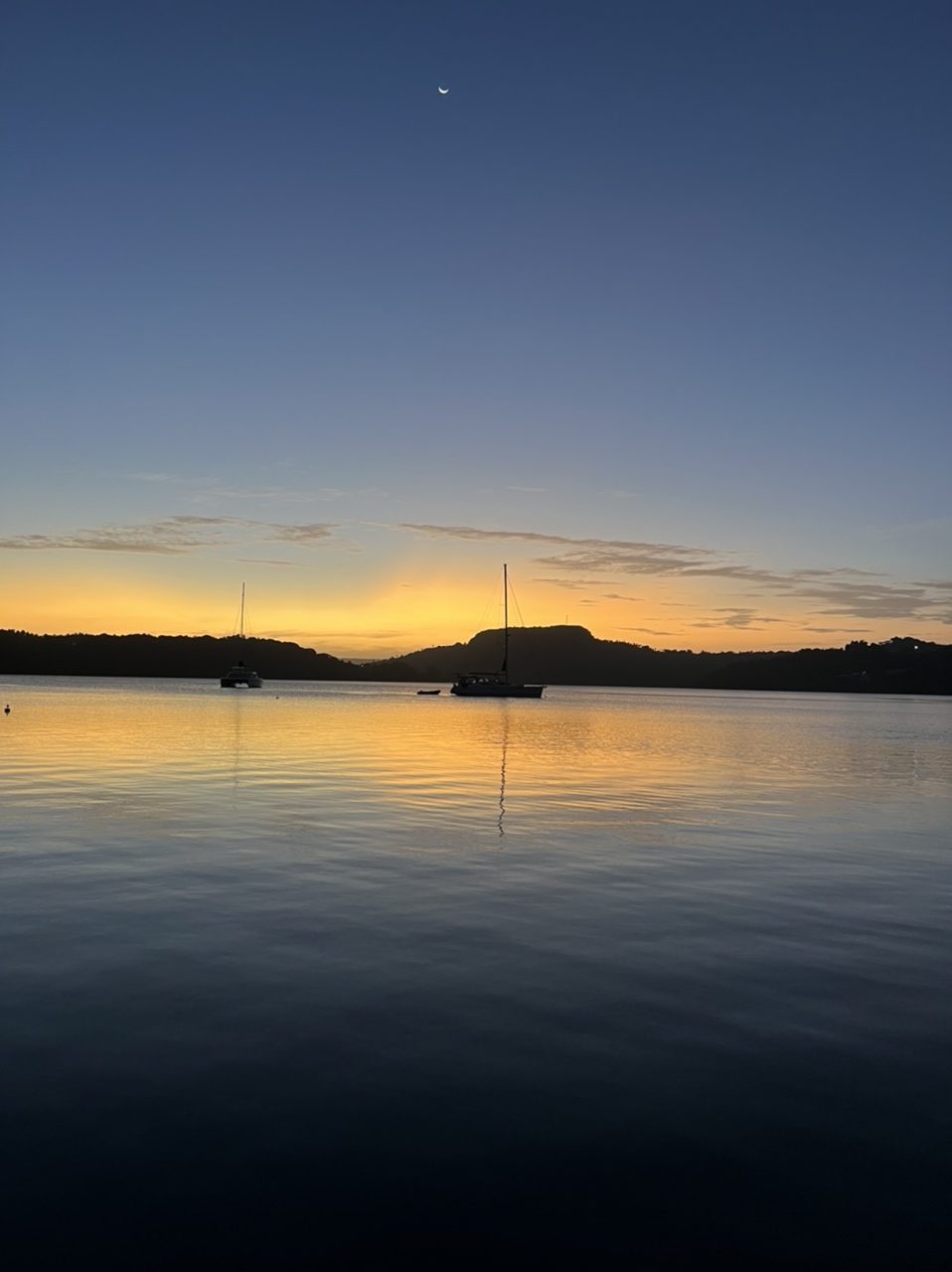

You have had quite the adventure. I’m glad you are finally back on the water. Can’t wait for pictures
OMG Cindy and Rick …your amazing …this puts recommissioning on a whole new level! We just recently met up with folks from Austria whom Full & By was anchored beside. They have been on the hard in a dirt yard at the north end on Texada Island ( ferry access only ) for a long cold wet BC spring …over 60 days clean scrapping painting and fixing. Finally they are sailing again and hope to return to FP next spring… but oh my what a job! And you both have done even more in less than 30 days! …with earthquakes happening! Hats off to you both and may things go smoothly from here on out. Stay in touch Hugs Anne & Dick
Oh my goodness, this was riveting! Thanks so much for sharing. Safe travels.